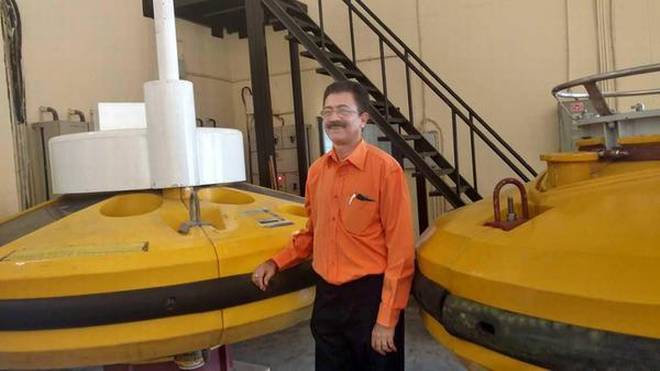R. Venkatesan
This is a collection of articles archived for the excellence of their content. |
2017: Lockheed Martin Award for Ocean Science & Engineering
Deepa H. Ramakrishnan, Global honour for marine scientist, August 3, 2017: The Hindu

R. Venkatesan has won the Lockheed Martin Award for Ocean Science & Engineering
Earlier in 2017, there was a tsunami scare and R. Venkatesan, who heads the Ocean Observation Systems at the National Institute of Ocean Technology (NIOT), remained busy through the evening watching seven tsunami-warning buoys and making calculations. The night passed and there was no tsunami.
“Had I been wrong, I shudder to think of what would have happened,” said Mr. Venkatesan, who is also the chairman of the International Tsunami Partnership. Recently, he was chosen by the Marine Technology Society (MTS), USA, to receive the prestigious 2017 Lockheed Martin Award for Ocean Science and Engineering.
The award is presented for the highest degree of technical accomplishment in marine science, engineering or technology.
He is reportedly the first Indian to be honoured by this organisation that was established in 1963.
Cutting-edge tech
With 34 years of experience in ocean studies — he initially worked with the National Institute of Oceanography and joined the NIOT in 1997 — and 2,500 days at sea, Mr. Venkatesan and his team have developed a technology that is on a par with international standards and the data is shared with other countries.
“My team also manages buoys that monitor the weather. The equipment records 100 data points, including wave height, wind speed, relative humidity and solar radiation. Even during cyclones, tracking is done very minutely. During Cyclone Vardah, we were able to relay extremely accurate information with very minute details thanks to the buoys, the software for which has been developed in-house,” he said.
Though it sounds easy, installing buoys and monitoring them is complicated. His team spends days together to moor the buoys carrying the sensors.
“The buoys are anchored at depths of even 4,000 metres. Sometimes, if there is a problem in even one sensor, the whole thing will have to be hauled up. If the seas are rough, then we cannot eat or sleep. And during the entire journey of a month or more, communication with our families is cut off. We work under tough conditions. In the Arctic, where also we work, we are given training to protect ourselves from polar bears,” he said, showing a certificate for one such programme that he attended.
Currently, his team is working on adding more data points for better information from the buoys.
They are also collaborating with other countries for sharing data. He will receive the award in Oslo in October.